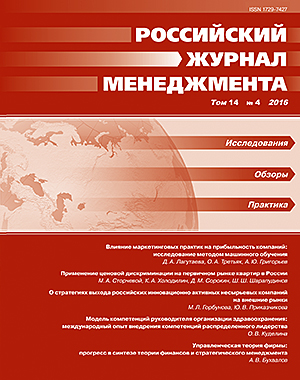Managerial Theory of Firm: Towards a Synthesis of Finance and Strategic Management
DOI:
https://doi.org/10.21638/11701/spbu18.2016.405Abstract
Modern strategic management explains competitive position of a company through manager’s efforts in searching and constructing firm-specific resources and capabilities. Corporate finance claims that an investor forms a diversified portfolio taking into account systematic risk only (no link to management) whereas firm-specific risk is completely ignored. We have arrived to a paradox, which affirms that company’s value does not depend on manager’s efforts. In essence everything depends on industry (industry beta is a recommended proxy for systematic risk). The survey is devoted to recent progress in solving the paradox. The breakdown is based on consideration of shocks in idiosyncratic cash flows, which leads to a new systematic risk model being grounded on managers’ actions. These shocks are related to exercising of growth options, which are the major tool for adaptation to uncertainty of external environment recommended by strategic management.
Keywords:
systematic risk, firm-specific risk, CAPM, idiosyncratic cash flows, real options, strategic management, managerial theory of firm
Downloads
References
Translation of references in Russian into English
Downloads
Published
How to Cite
Issue
Section
License
Articles of the Russian Management Journal are open access distributed under the terms of the License Agreement with Saint Petersburg State University, which permits to the authors unrestricted distribution and self-archiving free of charge.





